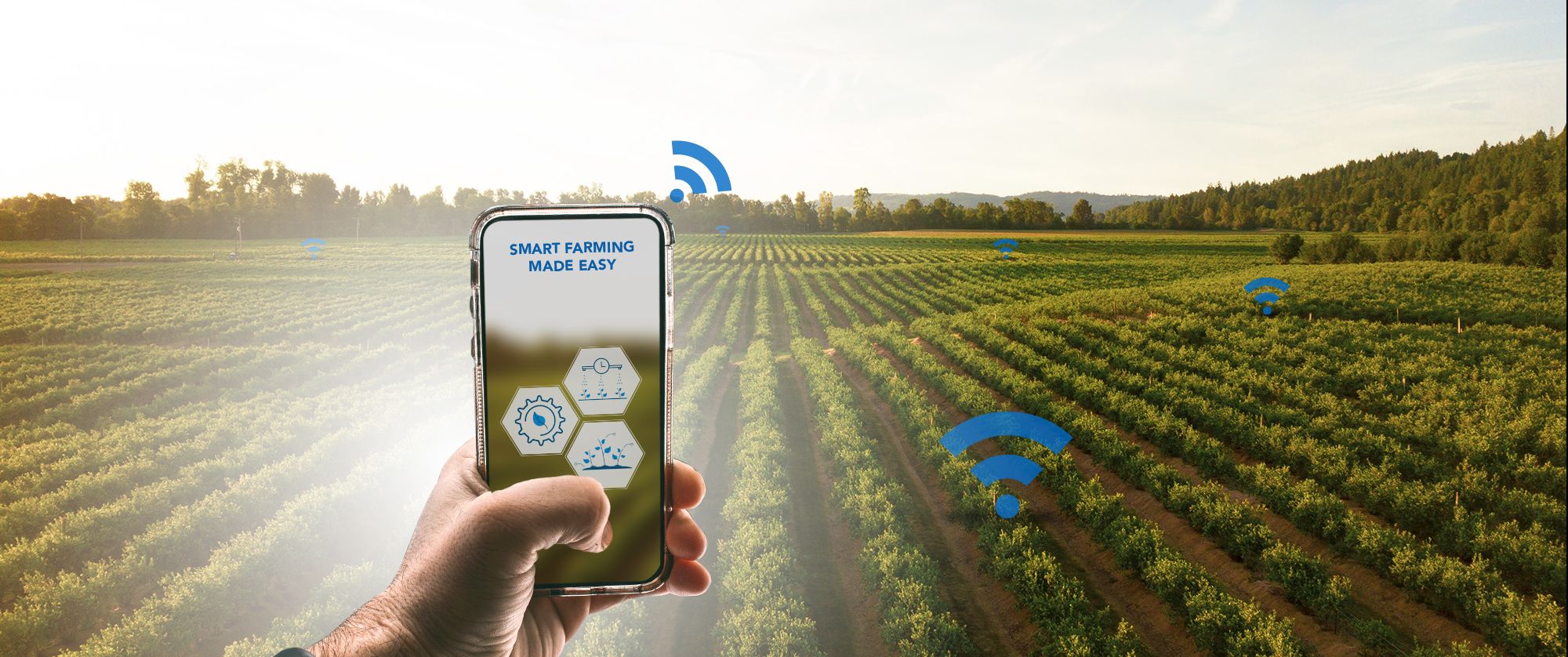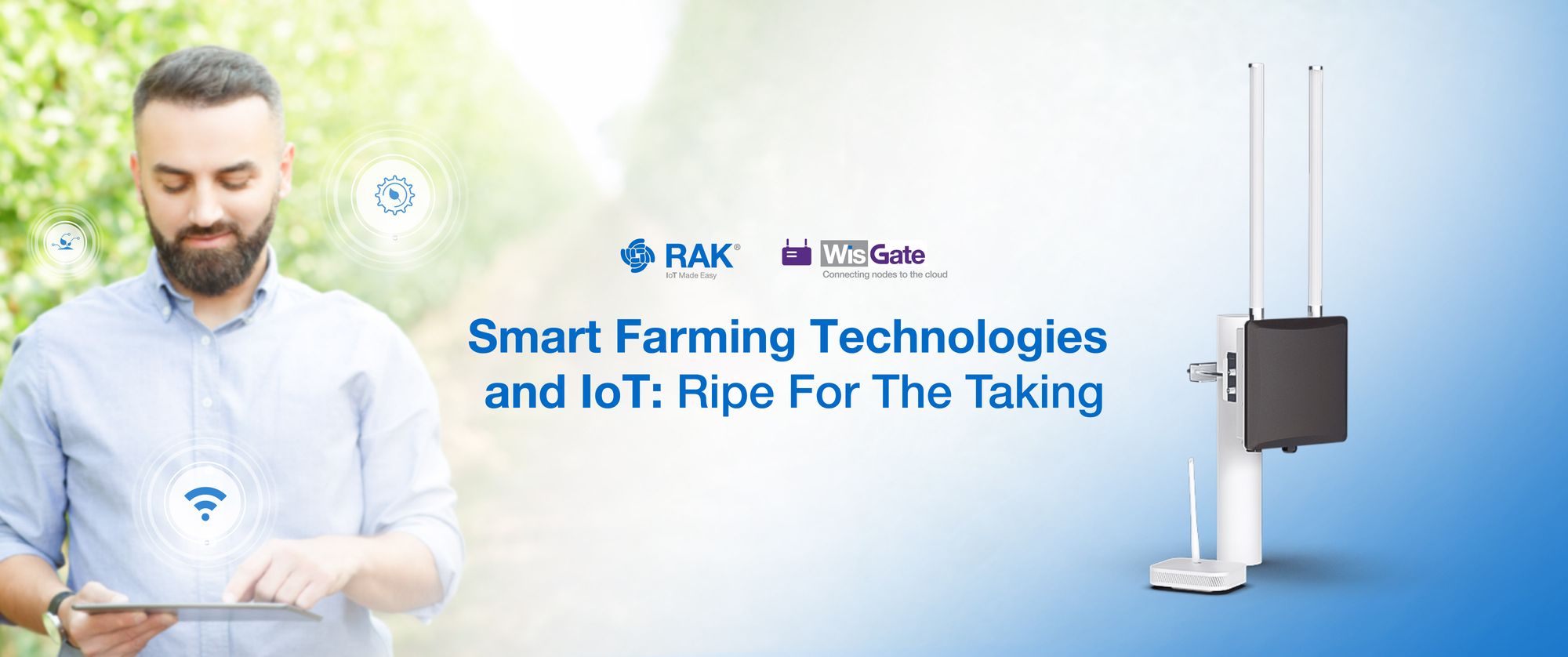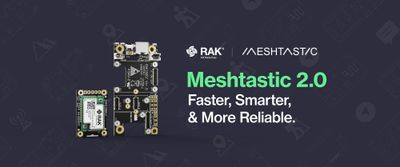5 WisBlock Sensors to use in IoT Solutions for Agriculture Automatization and Data Control
Did you know that only one farmer, with its work, can feed around 144 people? Today, on Agriculture Day, we honor them and their effort by showing you how to automate agriculture processes to monitor and control the different data delivered with these 5 WisBlock sensors and the WisBlock ecosystem per se.
According to recent studies, agriculture provides livelihoods for 2.5 billion people. Additionally, the World Bank comments that "growth in the agriculture sector is two to four times more effective in raising incomes". Saying that, how can we, with IoT solutions, automate taking decisions and lower costs by optimizing the use of resources?
Smart agriculture, or smart farming, is a great place to start. Thanks to the WisBlock ecosystem we can develop IoT solutions that focus either on environmental monitoring, soil moisture, chemical application for pH tests, livestock health monitoring and much more. The variety of sensors and actuator modules available help any individual or business to quickly validate a concept, rapid prototyping to drive the validated concept to mass production and create something measurable saving resources.
Must Read 👇

1. Soil moisture Sensor RAK12023 + RAK12035
Measure the relative percentage of soil moisture of any crop. It identifies the humidity of the soil to know when to water it, to grow most efficiently (based on the scientifically ideal percentage for optimal growth).
Even though this sensor is generically just called a soil moisture sensor, it is also used as a temperature sensor. Plants grow as a response of multiple variables on the environment, being humidity and temperature the most important ones. Both can influence crop growth, total yield, pest occurrence, water and fertilizer need; during the growing season.
Even so, considering that 70% of the water used in agriculture is fresh, RAK sensors can be used for irrigation optimization and automate the process with soil moisture monitoring.
2. RAK12019 WisBlock UV light Sensor
Modify and control the UV light in an interior or exterior environment, while supporting the data of your crop growth. Measure the intensity and regulate these lights through RAK12019 WisBlock UV light sensor. In an green house, you can automate the opening or closing of a ceild mecanism controling sun or artifial rays.
An interesting use case to highlight is the work done by Unergy, a Colombian company. They have solar panels that track the position of the sun in real-time (constantly monitoring the UV light intensity) to verify that the energy being generated is at its maximum.
Start using the data you are monitoring of different seasons and decide what actions to take on your UV-sensitive crops!
3. RAK16001 WisBlock ADC Module
Do you need to add other agriculture sensors that submit their measurement as analog signals? With the RAk16001 you can connect additional eight analog sensors to WisBlock to measure important soil parameters. With an easy to use interface to WisBlock you can integrate such analog sensors into your agriculture solution.
4. RAK13001 Relay
This relay allows you to turn devices on and off. For instance, if you want to automate the activation or deactivation of your irrigation system, you could use this LoRaWAN Relay to control pumps based on the percentage of water needed to irrigate the crops.
Start your irrigation monitoring process and control when to stop it when it is a high percentage of water, or vice versa.
5. RAK developer Kit
To take the acquired data to the cloud, we must have access to a network that allows us to transfer the data to a platform that enables the visualization of the different variables measured. This network is generated thanks to LoRaWAN gateways, which are deployed worldwide in an open and decentralized way through the Helium network.
Nevertheless, there is no problem if you have no available coverage in your area. You can deploy your own network, and this LoRaWAN® Developer Kit can be your best ally.
With the different kits RAKwireless offers, you have the essential tools to develop an IoT solution for any agricultural situation anywhere.
For example, with the weather station kit you can measure temperature and humidity. Also, you can measure the quality air with the environment monitoring kit. Once measured, the gateway allows you to transfer the data acquired to a LoRaWAN® Network Server (LNS) to then handle the integration with your own system or any third-party service, to monitor and control the solution deployed remotely.
These are a few ways you can use RAKwireless new WisBlock modules to improve your data validation and decision-making among your agricultural process. IoT infrastructure is nowadays used in different regions to understand how it can help farmers solve their main objective: track operations and performance to make better decisions and improve productivity.
There is no doubt that the data collected from these devices will guide farmers to adapt the fields to the quickly changing environmental conditions we are facing today.
Don’t miss 👇

The emerging technologies to optimize variables are the base of agriculture's future, helping farmers predict the climate and land use, among other things.
However, farmers, especially in developing countries, face two big problems: the lack of network connectivity in rural areas and the cost of the most sophisticated technology tools.
AI, Io, and biotechnology are the prominent trends that will dominate the future in agriculture. After a digitalization process, machines, sensors and modifications on the crops will stand out in the agriculture process for the future.
We encourage you to show us your solutions using these 5 WisBlock sensors! Feel free to read the rest of the WisBlock ecosystem and save money increasing production, measuring all kinds of data in real-time.






